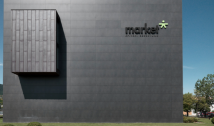Thermally Broken Joinery Now a Must for NZ Homes

Thermally Broken Joinery Now a Must for NZ Homes
Thermally Broken Joinery Now a Must for NZ Homes
Understanding the Change
In a significant step towards enhancing building sustainability and comfort, New Zealand's building code has been updated to require all new homes to have thermally broken joinery. This change, which took effect from November 2023, aims to improve the energy efficiency of buildings and reduce heating costs for homeowners, aligning with New Zealand's broader goals of reducing carbon emissions and enhancing living standards.
What is Thermally Broken Joinery?
Thermally broken joinery refers to window and door frames that include a barrier in their construction that prevents heat transfer. Typically, this barrier is made of a less conductive material than metal, often a polyamide or reinforced polyurethane, which interrupts the thermal pathway through the frame. This technology significantly reduces the amount of heat that escapes in winter and keeps out heat during summer.
Benefits for Homeowners
The introduction of thermally broken joinery in new homes comes with numerous benefits for homeowners, including:
- Improved Energy Efficiency: By reducing heat transfer through window and door frames, homes will naturally maintain a more stable indoor temperature, decreasing the need for heating and cooling. This can lead to substantial savings on energy bills.
- Enhanced Comfort: Homes equipped with thermally broken joinery will have fewer cold spots and reduced drafts. This improvement in the thermal envelope of the house contributes to a more comfortable living environment year-round.
- Reduced Condensation: Thermally broken frames help minimize the risk of condensation, which occurs when warm, moist indoor air contacts a cold surface. By maintaining a more consistent temperature on the surface of the frames, these windows and doors can help prevent moisture buildup that can lead to mold growth and damage to the home.
- Increased Property Value: Homes that boast higher energy efficiency ratings potentially command higher market values. Future-proofing homes with advanced building technologies like thermally broken joinery not only meets current regulations but also increases appeal to environmentally conscious buyers.
Considerations for Homeowners
While the benefits are significant, there are also some considerations for homeowners and builders:
- Initial Costs: Thermally broken joinery is more expensive than double-glazed due to the complexity of their design and manufacturing. This initial investment, however, is offset by the long-term energy savings and increased durability of these materials.
- Installation: Proper installation is key to maximizing the benefits of thermally broken joinery. Homeowners should ensure that contractors are familiar with these products and follow the manufacturer's guidelines closely.
- Design Limitations: Some designs and materials may be slightly limited by the need to incorporate thermal breaks. However, most leading manufacturers offer a wide range of options that do not compromise on style or functionality.
Looking Ahead
As New Zealand continues to push for reductions in household energy use and broader environmental impacts, changes like the requirement for thermally broken joinery in new homes are a step towards a more sustainable and economically sensible future. Homeowners building new properties are now part of a national movement towards better building standards that not only promise to reduce utility bills but also enhance the comfort and quality of New Zealand homes.
For current homeowners thinking about renovations, considering the switch to thermally broken joinery could be a wise investment, preparing your home for future standards and improving its overall energy performance.
As we move forward, staying informed and embracing these changes is key to contributing to a more sustainable and energy-efficient New Zealand. For more updates on how changes in building codes might affect you, stay tuned to our blog.













































